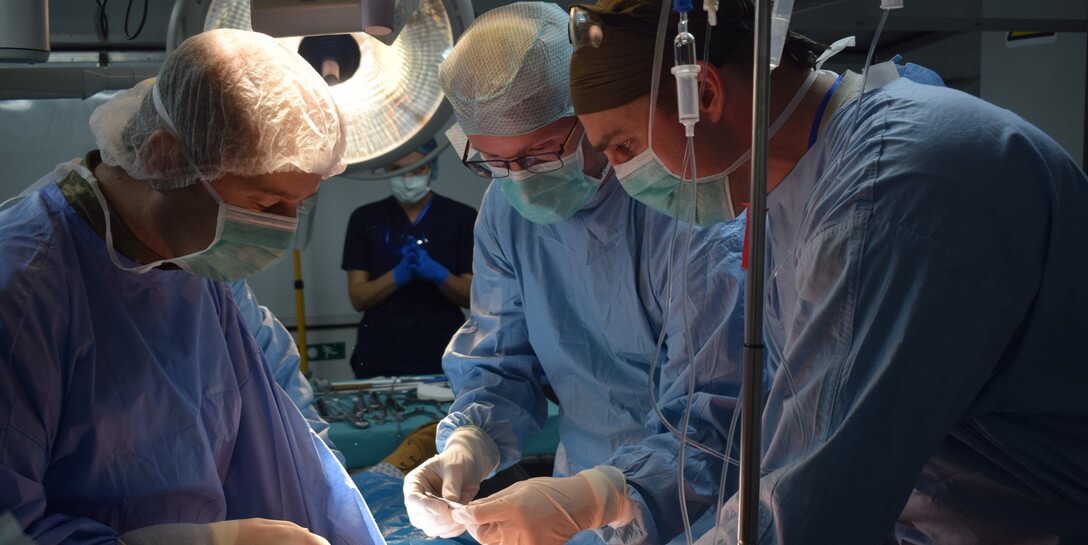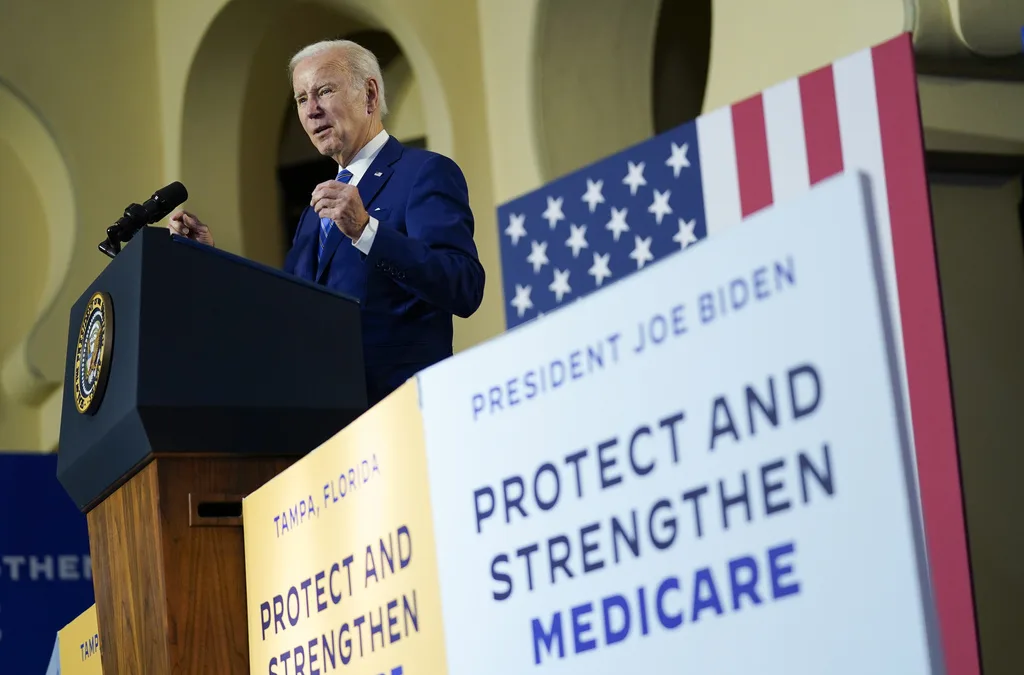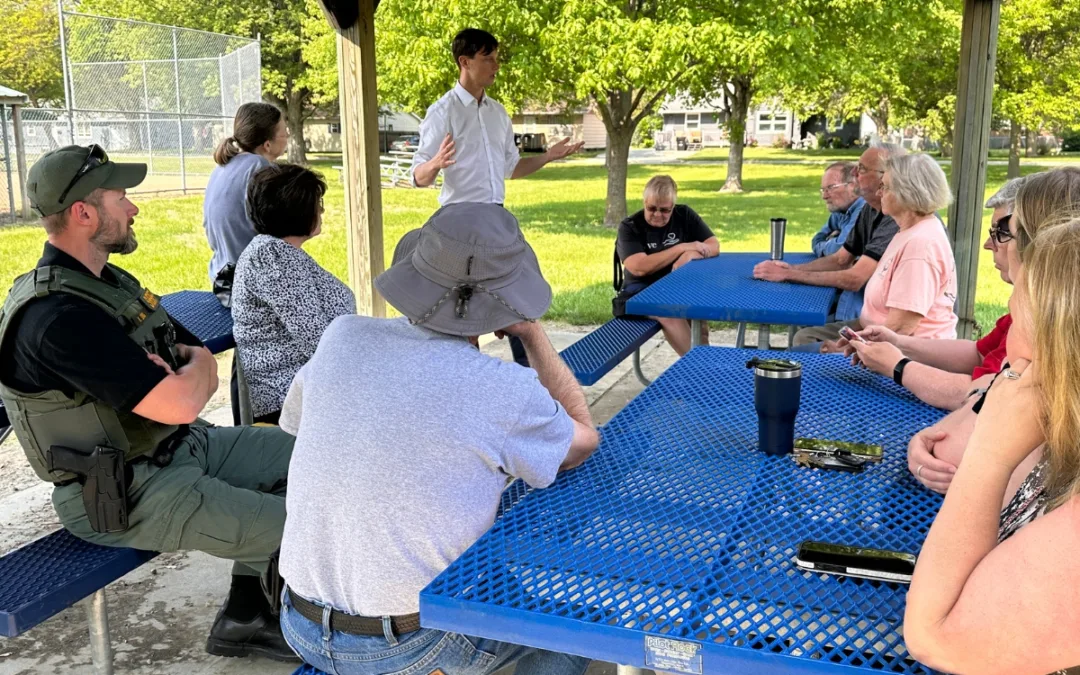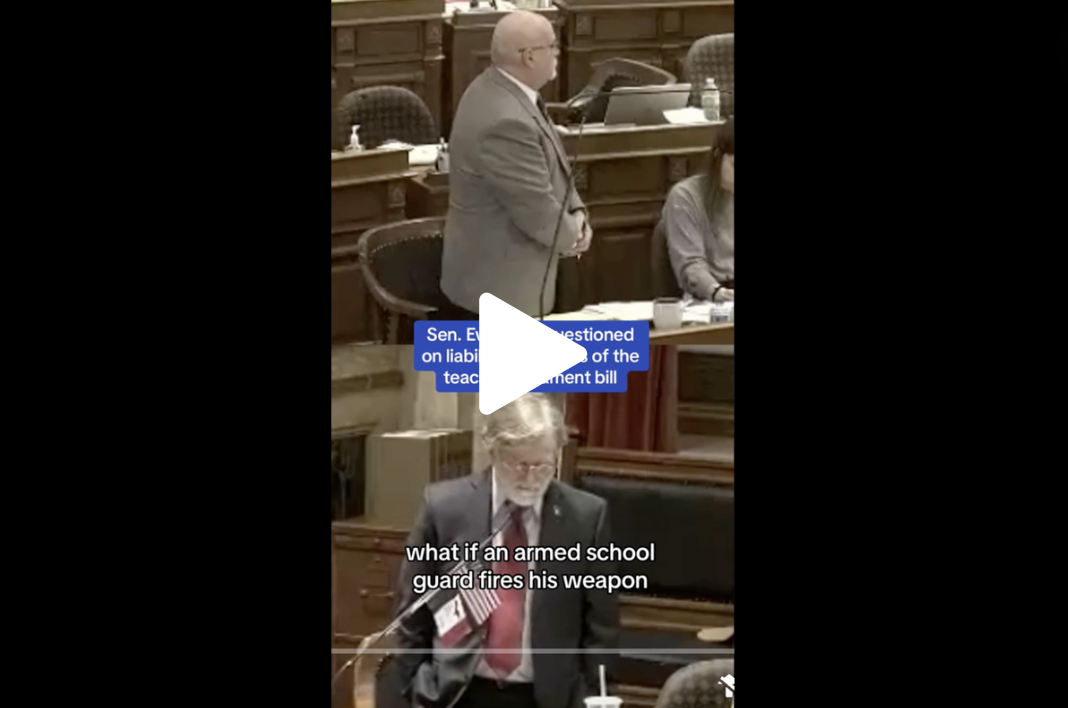
Any discussion about restricting the sale or possession of assault rifles must include input from trauma surgeons working to repair the monstrous wounds these military weapons create.
Senate Majority Leader Mitch McConnell and President Donald Trump have promised a discussion on gun safety when Congress returns to Washington, D.C., next month after its August recess.
In an effort to push discussion into action, the Western Trauma Association in 2018 passed a resolution in favor of banning assault rifles.
“These weapons are designed for the purposes of killing or severely injuring large numbers of people in combat … The presence of these weapons in our society endangers the lives of every man, woman, and child in the United States,” the Western Trauma Association resolution stated.
In an interview with the New York Times following the El Paso, Texas, mass shooting earlier this month, Dr. Alan Tyroch, chief of surgery at an El Paso hospital, described the horrific scene in the emergency room as the gunshot victims arrived.
He described turning over his first patient to find two fist-size holes in her abdomen. Her intestines had been shredded into a mixture of blood and feces by the explosive power of the AK-47-style rifle.
Tyroch cleaned and patched the wound ahead of another surgery set for the next day. The ghastly wounds the victims sustained, he said, often require many future surgeries over weeks and months following an assault weapons injury. Complications such as pneumonia, blood clots and infection are more common because of extensive blood vessel and organ damage. Post-Traumatic Stress Disorder also is a recurring problem, both for the victims, as well as the doctors and nurses that treat them.
[inline-ad id=”0″]
“There is a sense of relief when they say, ‘OK, there aren’t going to be any more victims’ — that’s the first time you take a deep breath,” said Dr. Nancy Weber, an emergency department physician in El Paso, according to the Aug. 9 Times article.
“Then you go home and you cry and you pray and you hug your loved ones,” Weber said. “Doctors and nurses are not immune … We see trauma and very traumatic deaths every day. But we don’t see 14 people in an hour, thank God.
“What has to change?” she asked. “We have to do something. Why aren’t we?”
No one wants to be shot with any type of firearm, but trauma surgeons have explained why the wounds inflicted by assault weapons are even worse than conventional firearms.
A gunshot injury from non-assault-type weapons leave behind a small entry wound and become embedded in tissue or bone, or pass completely through with a small exit wound. With a handgun or hunting rifle, for example, a person could be shot in the chest and still survive if they had immediate medical attention.
Assault weapon wounds often are much more devastating.
Assault weapons were developed by the military for the specific purpose of killing humans quickly and efficiently. They are a relatively new class of firearm developed for civilian use in the 1980s to mirror high-powered military-style weapons.
American trauma surgeons that served in Afghanistan and Iraq have reported seeing similar war zone-type causalities in local emergency rooms as military-grade weapons become more widespread among civilians.
Dr. Jeremy Cannon, a trauma surgeon at Penn Presbyterian Medical Center in Philadelphia, served in both Afghanistan and Iraq.
“The tissue destruction is almost unimaginable,” said Cannon, in a Times article following the February 2018 mass shooting at Marjory Stoneman Douglas High School. “Bones are exploded, soft tissue is absolutely destroyed. The injuries to the chest or abdomen — it’s like a bomb went off.
“Bystanders are traumatized just seeing the victims. It’s awful, terrible. It’s just a ghastly thing to see,” Cannon said.
[inline-ad id=”1″]
Other trauma doctors have relayed similar personal experiences.
University of Alabama physician Jeffrey Kerby was once a surgeon in the Air Force.
“You will see multiple organs shattered. The exit wounds can be a foot wide,” Kerby said. “These weapons are meant to kill people.”
Heather Sher was a radiologist who treated students injured at the school shooting in Parkland, Florida.
She wrote about her experience in a Feb. 22, 2018, Atlantic article:
“I was looking at a CT scan of one of the mass-shooting victims who had been brought to the trauma center during my call shift. The organ looked like an overripe melon smashed by a sledgehammer, and was bleeding extensively. One of the trauma surgeons opened a young victim in the operating room, and found only shreds of the organ that had been hit by a bullet from an AR-15, a semiautomatic rifle that delivers a devastatingly lethal, high-velocity bullet to the victim. Nothing was left to repair — and utterly, devastatingly, nothing could be done to fix the problem. The injury was fatal.
“The bullets fired by an AR-15 are different: They travel at a higher velocity and are far more lethal than routine bullets fired from a handgun. The damage they cause is a function of the energy they impart as they pass through the body. A typical AR-15 bullet leaves the barrel traveling almost three times faster than — and imparting more than three times the energy of — a typical 9mm bullet from a handgun. An AR-15 rifle outfitted with a magazine with 50 rounds allows many more lethal bullets to be delivered quickly without reloading.”
In addition to the Western Trauma Association, the American Medical Association and the American College of Surgeons also support banning assault weapons.
The use of assault weapons is creating a public health crisis. Shouldn’t Americans be listening to their doctors?
By Rick Smith
Photo via USAF
Posted 8/20/19
Politics

Biden cancels student loan debt for 2,690 more Iowans
The Biden administration on Friday announced its cancellation of an additional $7.4 billion in student debt for 277,000 borrowers, including 2,690...

The Republican war on Medicare raises the stakes in 2024
Nearly 670,000 Iowans rely on Medicare benefits—benefits they spent decades paying into, with the promise that the program would be there for them...
Local News

No more Kum & Go? New owner Maverik of Utah retiring famous brand
Will Kum & Go have come and gone by next year? One new report claims that's the plan by the store's new owners. The Iowa-based convenience store...

Here’s a recap of the biggest headlines Iowa celebs made In 2023
For these famous Iowans, 2023 was a year of controversy, career highlights, and full-circle moments. Here’s how 2023 went for the following Iowans:...




